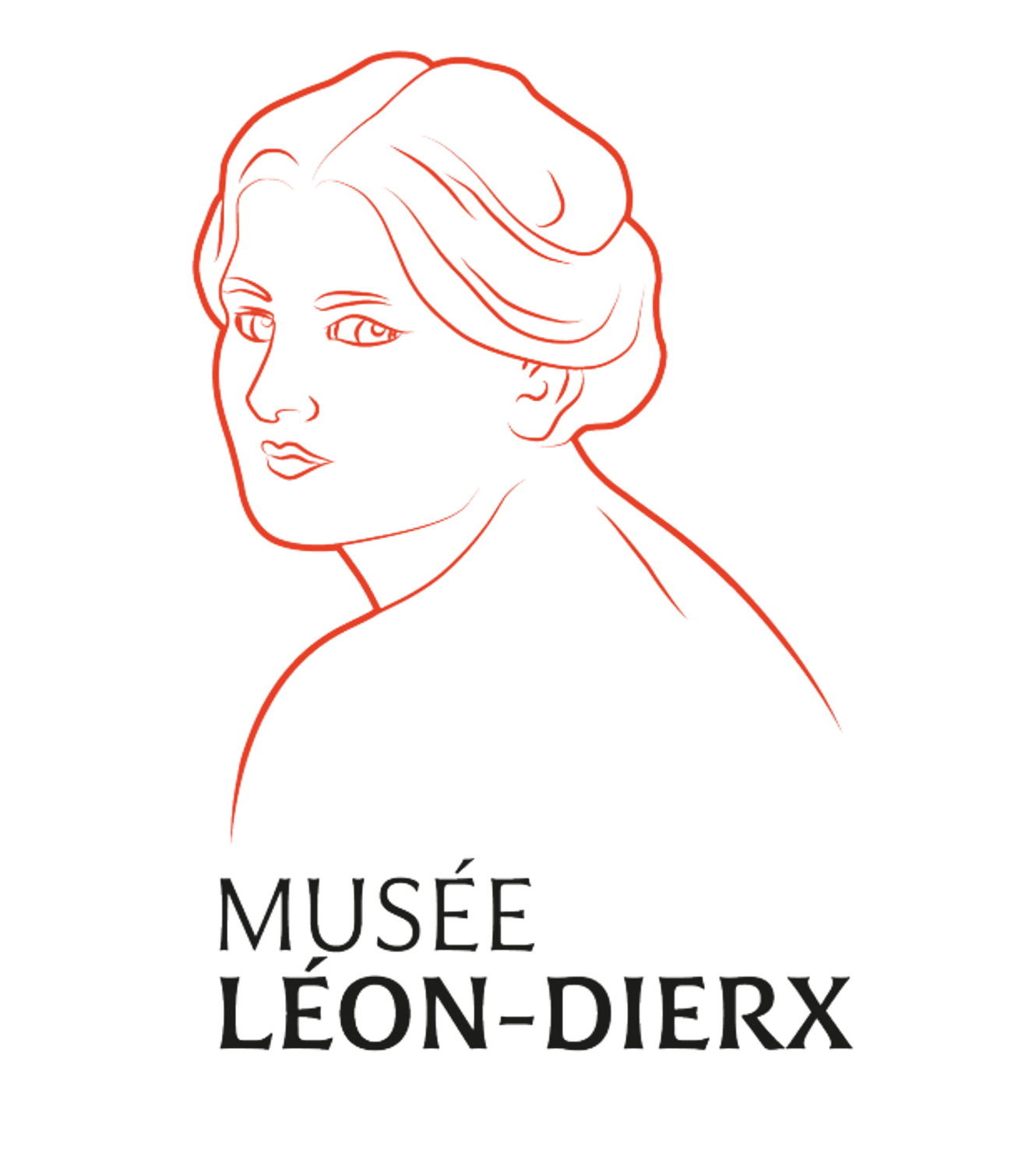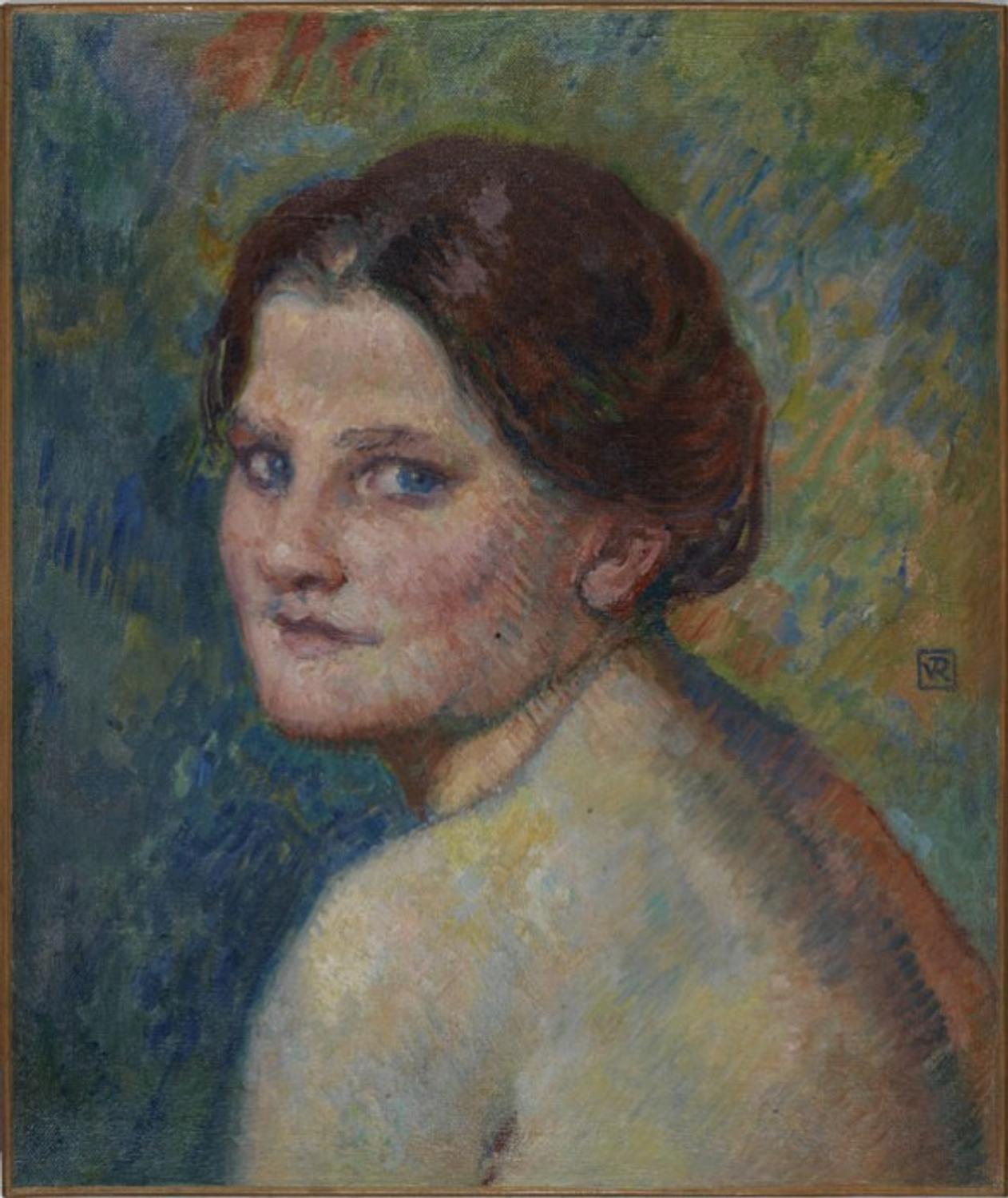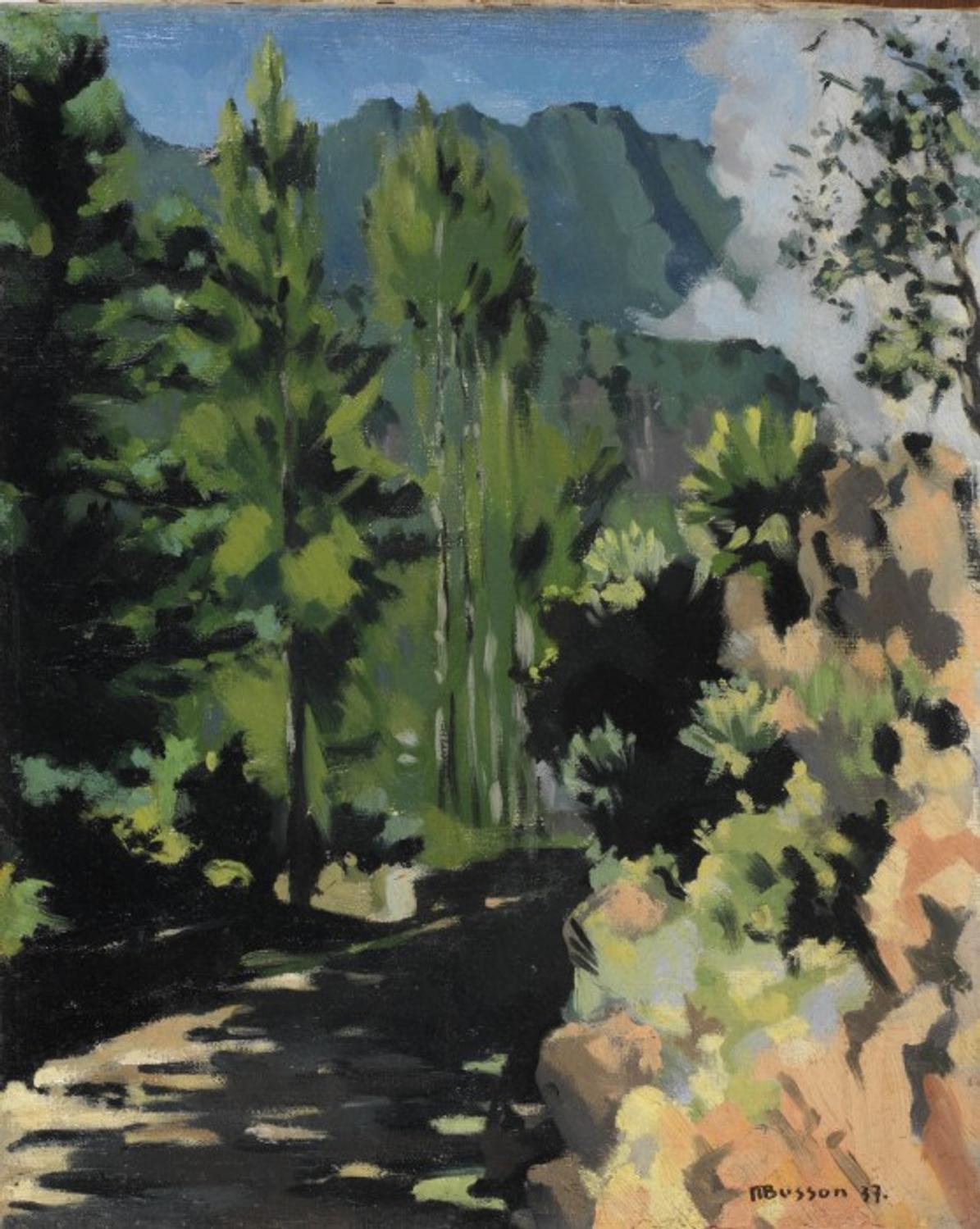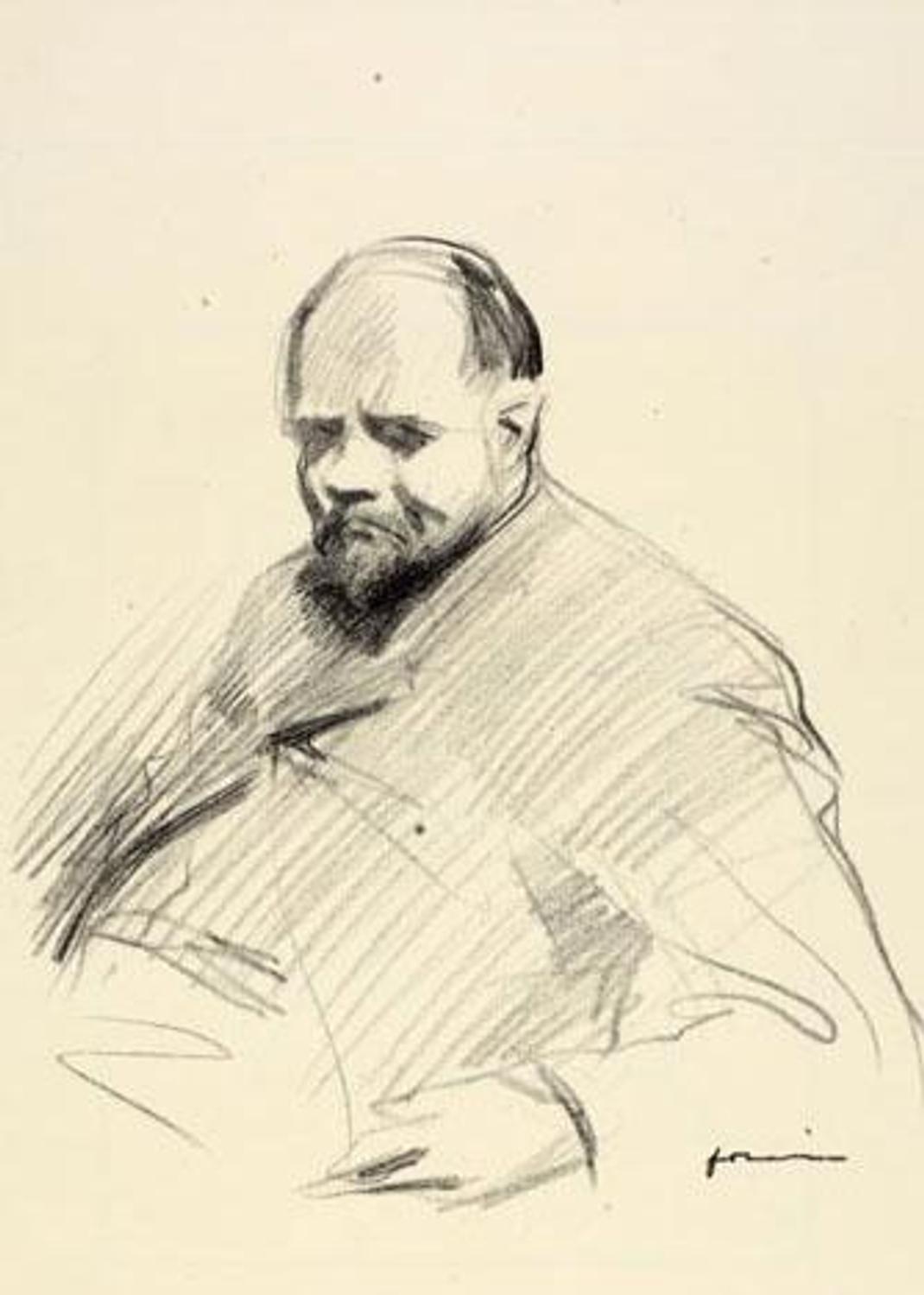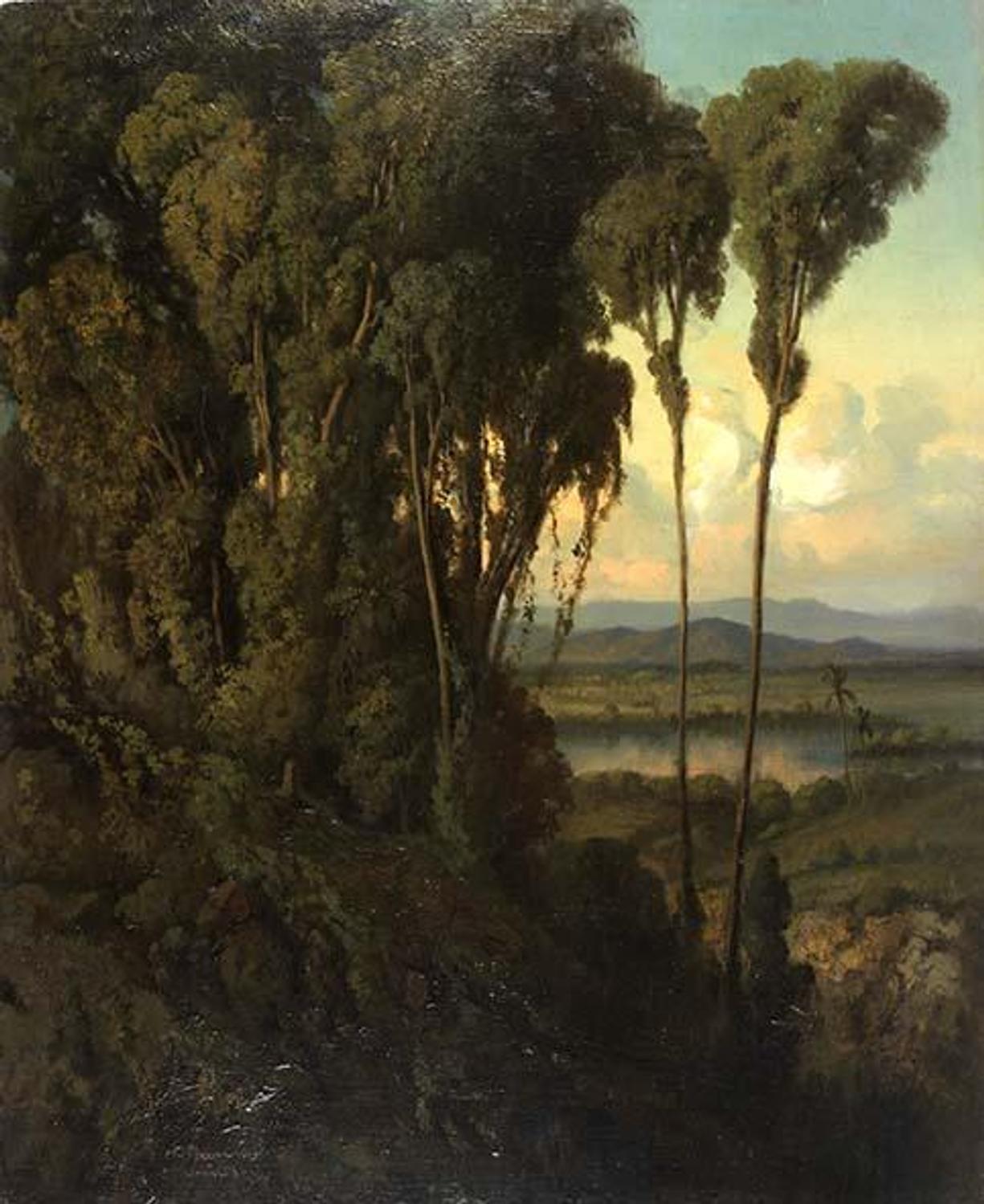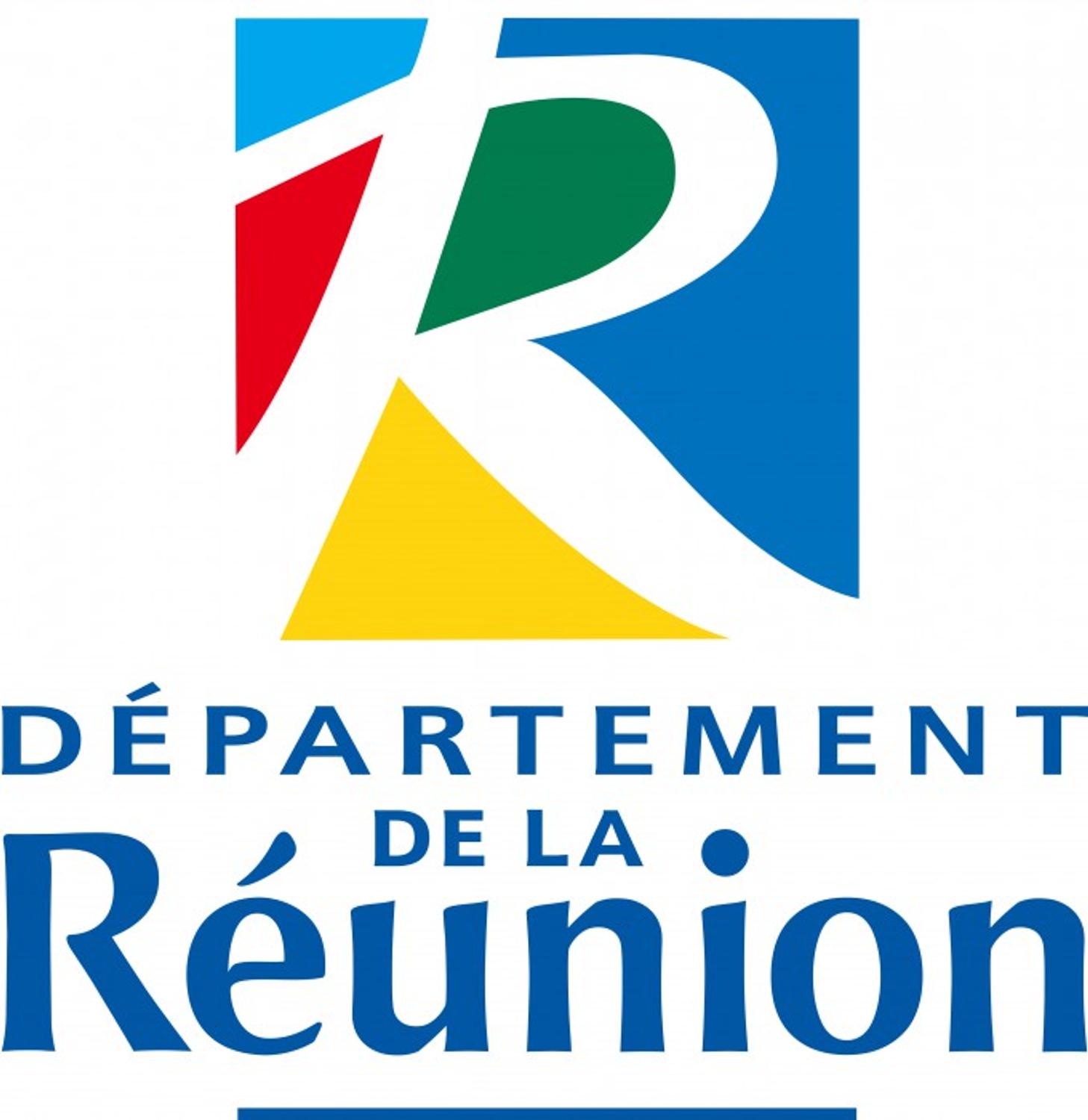THE LEON-DIERX ART GALLERY: HISTORY OF ITS COLLECTIONS
Theo Van Rysselberghe, Woman’s face in the open air, 1890-1900
The Art Gallery’s first collections
The Leon-Dierx museum and art gallery was created at the initiative of Georges Athenas et Aime Merlo, two childhood friends from the island who had settled in Paris. They were both writers using the pseudonym Marius-Ary Leblond. In Paris in 1910, they set up and ran a committee to raise funds for the collections to be displayed in the future museum. A second committee was set up in Reunion in 1911, managed by Adrien Merlo, Aime Merlo’s brother. It consisted of local dignitaries, members of the colonial bourgeoisie and relayed the efforts made by the committee in Paris. Their objective, defined with the approval of the committee in Paris, was to collect works and documents with the aim of setting up a «historical section».
From the start, the museum housed a collection of paintings and drawings by living artists, some of whom were at the forefront of early 20thcentury art. The works of the Italian sculptor Rembrandt Bugatti were displayed alongside those of Antoine Bourdelle from Tarn-et-Garonne in France. The paintings of Louis Valtat, whose popularity was soaring at the time and who received the support of Ambroise Vollard, were exhibited next to those bearing the signature of Armand Guillaumin or Charles Lacoste. The works of French artists coexisted with the Belgians Theo van Rysselberghe and Emile Claus, the Norwegians Karl Edvard Diriks, the American Frederick-Carl Frieseke, the Russian Nicolas Tarkhoff and the Australian Ruppert Bunny.
Very quickly, the project received the support of the local population in Reunion, who, in response to the donations made in Paris, started to bequeath objects belonging to them: swords, furniture, decorative works of art, archive documents, portraits of family or literary glory … objects reflecting the Creole heritage and way of life, but also a certain nostalgia for the colony in the 18th and 19th centuries.
The objects donated by Reunionese families also gave an overview of artistic creation in Reunion in the 19th century. They transmitted drawings, paintings and etchings produced by the most important Creole artists or those who had lived on the island, such as Emile Grimaud, Louis-Antoine Roussin, Adele Ferrand or Adolphe Le Roy.
To complete this initial collection, Marius and Ary Leblond set up a section devoted to Paul and Virginia, an internationally successful novel that had inspired a range of iconographic works. The Leon-Dierx art gallery was the first gallery or museum to include the topic in its permanent collections.
Marcel Busson, Route de Hell-Bourg, 1937
Interrupted momentum
During the twenty years that followed the opening of the museum, far fewer works were added to the collection. Following the First World War, the museum committee ran out of steam and Marius and Ary Leblond were less devoted to the project, notably Ary, who was very much invested in the organisation of the 1931 Colonial Exhibition and the creation of the Colonial Museum, the precursor of the Quai Branly-Jacques Chirac Museum. All this interrupted the momentum for the creation of the Leon-Dierx museum. However, there was one exception: the bequest made in 1922 by the Creole dignitary Herve Le Coat de Kerveguen of works painted by his mother, the artist Adele Ferrand (1817-1848). Her works, over 300 drawings and 24 paintings, belong to the Romantic current in French 1830s-40s painting.
Until 1938, a small number of purchases of modern paintings completed the collection. Some, such as Bergère endormie (Sleeping shepherdess) by Othon Friesz, were purchased during the Colonial Exhibition held in Saint Denis in 1938. With exception of the work by Friesz, the quality of the acquisitions made during this period did not rival with that of the donations made in 1911-1914.
In addition, the museum displayed Reunionese art produced in the 1930s. Following exhibitions of their creations, artists’ works were purchased by the museum. These were essentially works by Busson, an art teacher working at the colonial high school and those of Maurice Ménardeau, a French naval painter who had visited the colony several times. These young artists, whose style was resolutely modern, left us with landscapes the style of which marked a break with the academic heritage of the previous century.
In 1939, Eugene Massinot, second curator of the Leon-Dierx museum, started his career by drawing up a more detailed inventory of the collection, which now consisted of over 1,900 items.
Jean-Louis Forain, Ambroise Vollard, around 1910
The Vollard donation
Ambroise Vollard, the famous art dealer from Reunion, to whom we owe the discovery of the main early 20th century artists, made a modest contribution to the project of Marius and Ary Leblond by donating two works to the future Leon-Dierx art gallery.
When he died, his estate included an impressive number of works of art: the collections of his gallery and the unsold plates for his various art books. In 1947, his younger brother Lucien Vollard, having already spent part of his inheritance, asked Marius and Ary Leblond to select some works for the Leon-Dierx gallery, to add to its collections.
Continuously wishing to build up an educational and encyclopaedic collection of modern art, Marius and Ary selected 157 works: 26 paintings, 25 drawings, 11 sculptures, 8 works of decorative art and 87 etchings, mainly edited by par Ambroise Vollard, all reflecting the essential role he played in reviving interest in the publishing of original etchings and artists’ editions. The works donated arrived in Reunion in August 1947 and were closely associated with the island’s new status, since this was the period when Reunion was no longer a colony but became a French department, giving it closer links to mainland France.
The prestigious collection, the most important one in the Indian Ocean, confirmed the new direction of what now became a fully-fledged art gallery, resolutely favouring modern art, a very rare choice to be taken at the time. The works selected by Marius and Ary Leblond, which consisted of a large number of engravings, drawings, ceramics and a small number of paintings, reflect both the career of Ambroise Vollard and the recent history of art in France. The collection highlights the important artistic tendencies from the second half of the 19th century until the early 20th century, such as Impressionist art (Caillebotte, Manet, Renoir, Sisley), Neo-Impressionism (Cross, Signac), Symbolism (Redon, de Groux) and Fauvism (Vlaminck).
The large number of etchings reflects Vollard’s work as a publisher who very often wanted to give young artists their chance. Nowadays, many of these artists have achieved a degree of fame on an international level. These works were added to the modern collections of the museum, which as a result now became an art gallery essentially devoted to fine arts.
Charles Merme, Landscape in Madagascar, 1848
Heritage and contemporary art
Subsequent curators continued to enrich the collections along two lines: first of all acquisitions directly linked to the historical collection and also works related contemporary artistic research.
In the 1960s-70s, the collections opened out to universalist artistic creation through the acquisition of European works covering all periods. This direction reinforced the didactic aspect of the art gallery and its educational function for the younger members of the population.
The Vollard collection was completed in the 1980s-90s: etchings by Pierre Bonnard, Auguste Renoir, Georges Rouault, Marc Chagall, Odilon Redon, Berthe Morisot, Ker-Xavier Roussel and Edgar Degas were added to the collections. The acquisitions mainly consisted of works produced by Vollard as publisher, since paintings and sculptures by these artists could no longer be purchased, due to the high prices they now fetched on the art market. This purchasing policy, dynamically applied in 1985-1986, was to continue during the following decades and still remains one of the policies aimed at completing the collections. During this period, works linked to local 19th century artistic creation were also added to the gallery’s collections, as well as a few sculptures and paintings by contemporary Reunionese artists. The period also marked the start of important restoration work on the pictures in the museum, work which continued until the late 1990s.
During the period which followed, the art gallery innovated by creating strong links with contemporary works of the 1990s, through an ambitious policy of temporary exhibitions of works by internationally recognised artists, whose creations were linked to the history, identity and the island’s multicultural past: Chen Zhen, Yan Pei Ming, Sarkis, Erro... Following exhibitions of these artists’ works, certain items came to be added to the gallery’s collections. Through their quality, these contemporary works now comprise the basis of the modern art collection that was lacking in the gallery. Promoting contemporary creation remains a priority for the Leon-Dierx art gallery through its temporary exhibitions.
Still today, the process of enriching the gallery’s collections focuses on 19th-century Reunionese artists, as well as works from the late 19th and early 20th centuries, which make up the identity of the Leon-Dierx art gallery.
